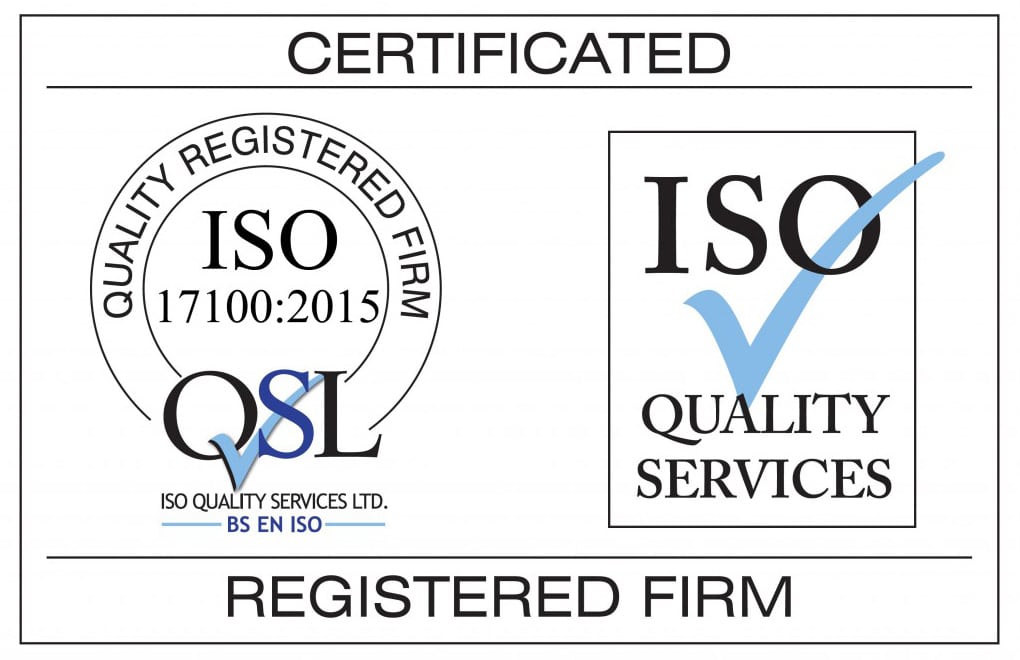Since 2015, the International Organization for Standardization ‘s ISO 17100 standard has set new technical requirements for the quality and conformity of translation services. What are these new requirements?
Definition of ISO 17100
Published on 1 May 2015, the new international quality standard ISO 17100 replaces the 2006 European standard EN 15038. These new requirements for translation services cover all the steps, resources and other elements necessary to deliver a certified translation project. This allows translation service providers in Europe and Canada to certify the quality and conformity of their services to their clients.
Differences with EN 15038
Like the EN 15038 standard, defining the translation process remains central to ISO 17100. It also determines the professional skills of each of the service providers (translators, editors, proofreaders and managers) involved in a translation project. Interpreting services and the use of machine translation are not covered by ISO 17100.
Unlike EN 15038, the ISO 17100 standard focuses on the interaction between a service provider and its customer. From the moment the contract is signed until the end of the process, it establishes project-specific milestones, as well as all modifications, requests and remarks with a view to assessing customer satisfaction.
ISO 17100 processes
The new ISO 17100 standard lists the pre-production, production and post-production processes of a translation project. It includes a detailed description of each step of the process, the tools (including computer-assisted translation) and media used, as well as a list of 42 definitions and 6 informational appendixes. It covers specific concepts and aids related to translation, namely encompassing the administration, technology, techniques, control, management and reporting processes.
In order to ensure the ISO certification of a translation, the translator first carries out a self-check. In a second step, a proofreader reviews and corrects the document provided using a bilingual comparison between the source and target languages. A specialist or monolingual revision of the target language can also be carried out by a specialist, other than a translator. Before publication, proofreading is systematically carried out. Finally, the project manager takes care of the final verification and compliance with the requirements of the standard before sending it to the client.
Professional skills of translators and proofreaders
The ISO 17100 quality standard requires translation agencies to work exclusively with qualified translators and proofreaders. To do so, they must, in addition to having five years of professional experience in translation, hold a state-recognised postgraduate diploma in translation or an equivalent qualification in another field together with a minimum of two years’ professional experience in that field. In addition to these requirements, revisers also need to have experience in translation or editing.
In order to meet the required specifications, translators, proofreaders, editors and managers also need to demonstrate a high level of technical knowledge in their specialist areas to ensure the delivery of a quality translation. For these purposes, it is mandatory for agencies to have an up-to-date register of the professional skills required by providers.

